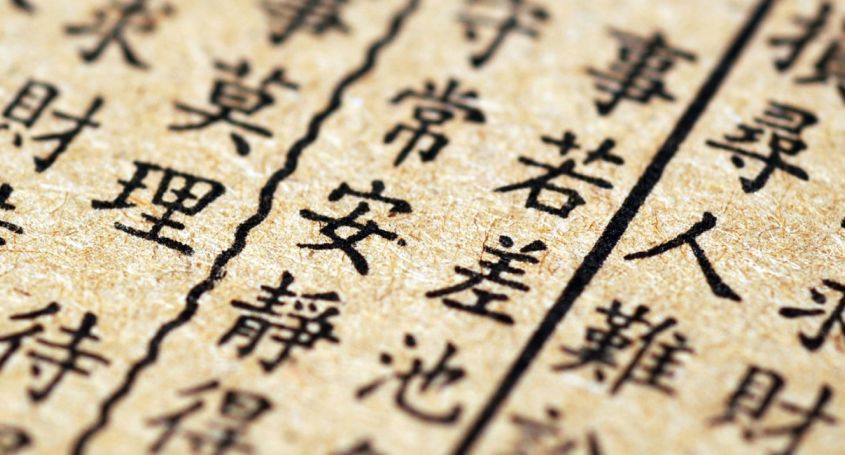Chinese writing consisted originally of pictograms and ideograms. It is not easy to reproduce a historical chronology, although the writing does tell us that the Chinese characters appeared more than three thousand years ago from a combination of abstract signs.
There are many different theories on the invention of Chinese writing, being most of them plain legends. The widely accepted theory – probably due to its beauty – is the one which says that Cang Jie, one of the Yellow Emperor Huandi´s consultants, invented the pictograms and the first symbols of the Chinese characters, by looking at the prints left behind by birds. True: it is a beautiful, though fanciful, story, because the symbols have a wider deeper sense, as we are going to see.
From the Han Dynasty up to the Jin Dynasty
The conditions for the expansion of writing on paper were created during the Han dynasty.
With the appearance and the development of the paper industry, the bones of the Zhou dynasty (1766-1027 B. C. E.), the bronze from the Zhou dynasty (1027-256 B. C. E.), the stone (772-481 B. C. E.), the bamboo from the Oriental Han dynasty (206 B. C. E. - 9 C. E.), the silk and other writing devices disappeared by and by.
Paper, brush and ink assumed finally this role. Thus writing became a unique way of communication and expression, with fully formed characters full of evolution and an artistic personality of their own. All that, together with the pedagogic advancement, showed the Hans´ pioneer spirit and their cultural atmosphere, and it surpassed the primitive engraved symbols and the pictographical texts.
The Meaning of Calligraphy
During the period between the Han dynasty, the Three Kingdoms (220-280 C. E.) and the Eastern Jin (317-420 C. E.) calligraphy was highly valued by all segments of society.
The simplified and more elegant version of Chinese writing was the result of a long transformation process of black and white lines on paper, an extreme dichroism which corresponds to the elevated spirit of Chinese philosophy.
With the intention of expressing ideas and emotions in a faster way, some significant calligraphic styles were later on developed, such as, the 隸書 “Lìshu” (flat appearance) 隸書 “Cǎoshū“ (cursive style) 草书 , the 行书 “Xíngshū“ (semi-cursive Script) and 楷书 “Kǎishū“ (standard style) .


